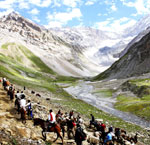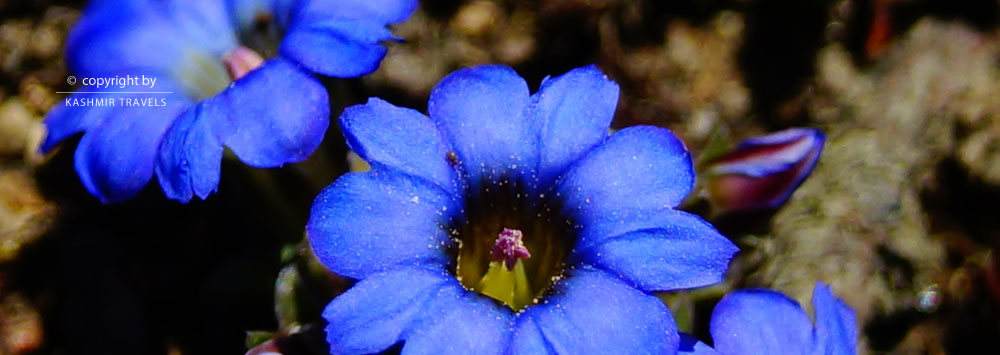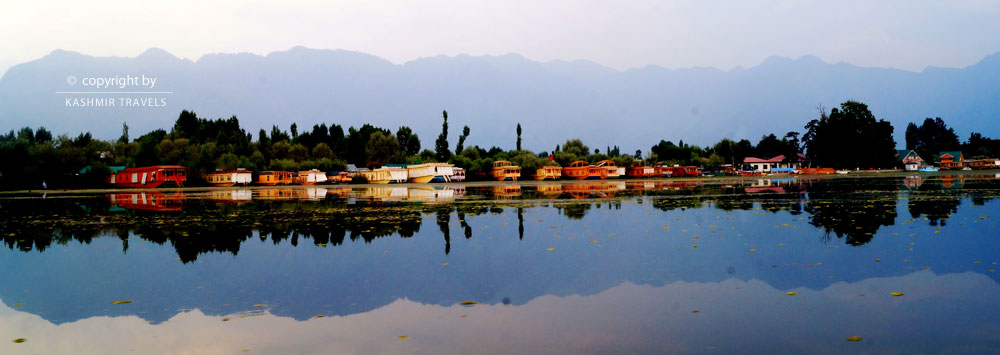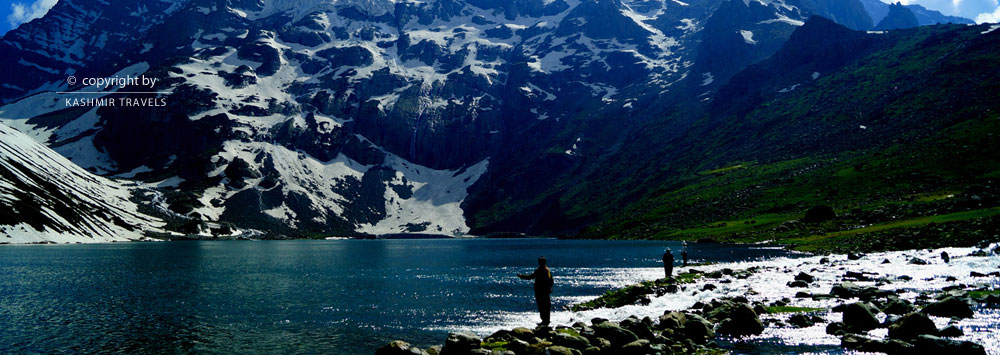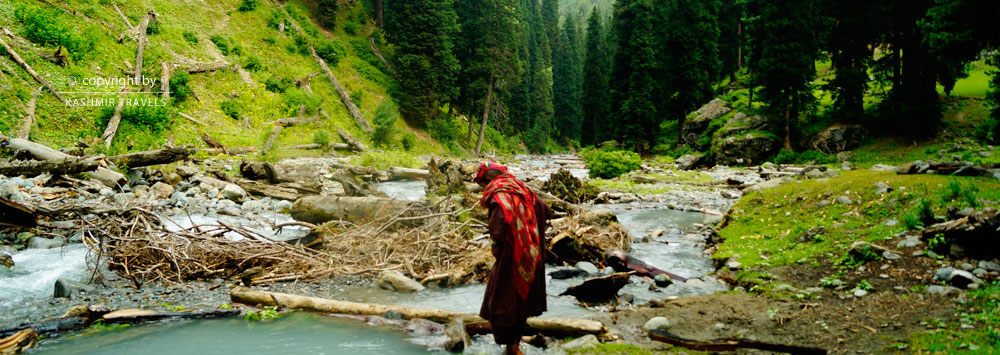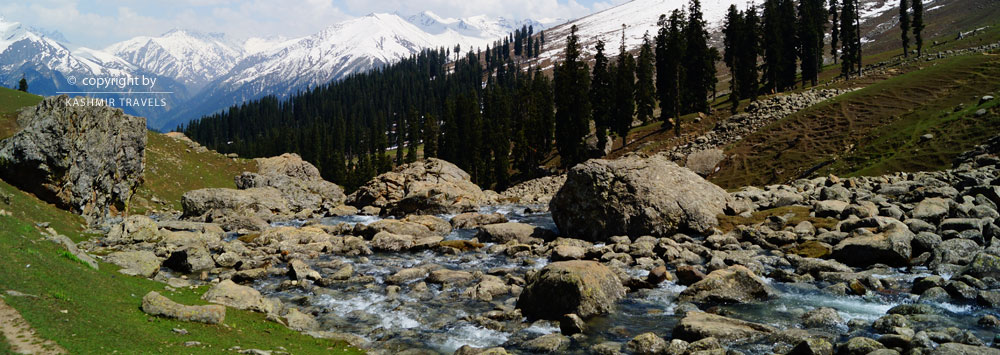Landscape
FLORA AND FAUNA OF JAMMU, KASHMIR AND LADAKH: A World of Color
Jammu, Kashmir, and Ladakh boast a remarkable variety of plant and animal life. The vegetation in Jammu is diverse, ranging from thorny bushes on the desert plain to temperate and alpine plants at higher elevations. There are a variety of broad-leaved trees, including silver fir, horse chestnut, and maple. Birch, rhododendron, and a sizable number of herbal plants grow at higher elevations. Kashmir, likewise, is magnificent in its diversity of both . The chinar, which is found all over the valley, is the most gorgeous of the Kashmiri trees. In the valley, there are high deodar, pine, and fir mountain ranges.
The diverse vegetation of Kashmir is further enhanced by walnut, willow, almond, and cider.
Kashmir is well-known for saffron (crocus sativus), walnut, grapes, and pomegranate , as well as for its temperate rosaceous fruits including apple, pear, cherry, almond, peach, plum, and apricot.The region of Jammu and Kashmir is not uniform. It is distinguished by its undulating topography and variety of soil types, which encourage the cultivation of a wide range of plants. These in turn provide a variety of life forms to construct an ecological pyramid.The Himalayas receive plenty of rainfall, with the exception of the desert plateaus of Ladakh. Freshwater perennial streams run through the landscape.
There is a lot of precipitation, particularly snowfall, throughout the winter. In the fertile reaches of the valleys, shrubs and herbs of enormous anthropogenic significance flourish. The dense woods found high in the hills are made up of trees like rhododendrons.
Over 3000 different plant species are thought to exist in the regions as a whole. These are dispersed inequitably throughout the union territory's three regions. For instance, Ladakh's dry borderlands are home to over 880 species, the majority of which can endure harsh environmental conditions. There are more than 500 plant species in Jammu.
The Himalayan Kashmir region has over 3,054 types of plants.
The union territory's flora has a high level of endemism. Here, you can find plant families that are unique to this area. The people who live in Jammu and Kashmir depend heavily on the flora that are present there. The forests are a source of food, fuel, honey, and other items that greatly contribute to the residents' sense of identity. In the area, several plants with therapeutic characteristics have been discovered. Locals use several of these plants as crude medications. The floating islands are distinctive to Kashmir lakes.
These are utilised to cultivate horticulture plants and crops. Jammu and Kashmir's moderate, chilly, arid environments are home to 11 medicinal plants. Numerous healing plants flourish naturally in alpine and temperate environments.
Some indigenous medicinal plants have been taken up for cultivation, such as Dioscorea deltoidea, whose tubers are high in diosgenin and produce the steroid hormone cortisone.More than 20% of the union territory's land is covered in woods, creating a sizable reservoir of natural wealth.The vegetation can be categorised as follows:
1.Subtropical Forests
Only the Siwaliks and lower slopes of the Middle Himalayas contain subtropical rainforests.Teak, sal, shisham, and pipal are the main tree species in subtropical woods.
The months of January through February are when these trees lose their foliage (before hot weather).
2.Tropical Forest:
These are found on the Pir Panjal, Greater Himalayas, Zanskar, and Karakoram slopes.
Deodar, pine, silver fir, cedar, and hazel are the predominant species.
3.Alpine Forests
Margs, also known as alpine meadows, are the names given to the vegetation in the union territory of Jammu and Kashmir, particularly the grasses that grow in the upper altitudes of the mountain chain.These pastures are located at higher elevations bw 3600–4000 metres above sea level.It's bitterly cold there.Only during the summer (May to September) do the high altitude ice fields melt, allowing for the growth of lush green grass.
4. Xerophytic Plants
This kind of vegetation is present in Ladakh.
This type of vegetation can grow in the absence of rainfall for longer periods of the year.These vegetation's plants have unique water-conserving traits.
A staggering 16% of all the faunal species in India are found in the union territory. This remarkable diversity of chordate species is primarily due to birds. Aside from birds, the union territory is home to a wide variety of other species, including mammals, reptiles, fish, amphibians, and an endless variety of insects.
The union territory's strategic location at the meeting point of important climatic zones accounts for its great degree of diversity. This contributes to the very endemic nature of the creatures that in the union territory can be discovered.There is a wide and diverse wildlife in the mountainous areas of Kashmir, Doda, Udhampur, Poonch, and Rajouri, including leopard, cheetah, and deer, wild sheep, bear, brown musk shrew, and muskrat. There are also several kinds of frogs, lizards, bats, and snakes in the area.Chakor (Alectoris graeca), snow partridge, pheasants, and peacock are some of the game birds found in Jammu. Sport and adventure enthusiasts enjoy Kashmir's deep forests, which are home to ibex, snow leopards, musk deer, wolves, red bears, black bears, and leopards. Ducks, geese, partridge, chakor, pheasants, wagtails, herons, water pigeons, warblers, and doves are among the avian game.
About 240 species of native and migratory birds, including the black-necked crane, have been identified in the typically dry desert of Ladakh. TheYak, Himalayan ibex, Tibetan antelope, snow leopard, wild ass, red bear, and gazelle are among the native animals of Ladakh.
The variety of bird species is astounding.
The 179 genera and 16 orders in which the 358 species of birds that have been identified in the union territory can be found can be categorised. Many of these birds migrate, enduring perilous voyages to reach the enticing destination. 44 fish species, divided into 14 genera,are found in the waters of the union territory. Frogs and other amphibians are classified under 14 genera.
There are an unlimited number of insect species, many of which have not yet been identified.
There are 75 species of mammals. The species are further separated into subspecies, with 54 genera representing these, which are then divided into 21 families. Carnivores make up a significant portion of the mammal population.The union territory is abode to a plethora of faunal treasures. Numerous threatened species of animals have no other place to go, and the union territory is doing everything it can to ensure their survival.
There are now established national parks, wildlife sanctuaries, and protected areas in the area. In Kashmir Valley, there are numerous national parks and wildlife sanctuaries that are home to an incredible and varied variety of flora and fauna.
The national parks, biosphere reserves and wildlife sanctuaries of Kashmir include Kazinag National Park, Overa Aru Wildlife Sanctuary, Achabal Wildlife Sanctuary, Hirpora Wildlife Sanctuary, Gulmarg Biosphere Reserve,etc. Jammu too has set up various parks and sanctuaries for the conservation of flora and fauna including Ramnagar Wildlife Sanctuary, Kishtwar High Altitude National Park, Jasrota Wildlife Sanctuary, etc.The wildlife reserves of J&K are noted for some of the rarest and endangered types of wild animals, in addition to their unspoilt natural beauty. The Himalayan black bear, musk deer, Himalayan marmot, and species of wild goats like the makhor can all be seen.
Hangul, an endangered species of red deer, is also present.
A variety of Himalayan birds, including pheasants, and Golden eagles, bearded vultures, blood pheasants, monal pheasants, and koklass pheasants can also be seen circling the gorgeous mountains. In the union territory's national parks and wildlife sanctuaries, you can witness a number of more unique and beautiful kinds of life.During the winter, waterbirds from all over the world and far-off regions flock to the marshes of J&K. These wetlands are crucial for long-distance migratory birds since they serve as a stopover for feeding and resting.
As a result, J&K is a crucial area along the Central Asian Flyway (CAF), which is frequented by numerous migratory species.Jammu and Kashmir's mountains, foothills, and plains are home to a zoogeographic richness that includes both Oriental and Palearctic flora and wildlife. The UT is geographically divided into numerous distinct areas, making it the perfect habitat for wildlife, like the Markhor in the Kazinag, the Hangul in Dachigam, the Snow Leopard in Kishtwar, and the Bar-headed Goose in Gharana in Jammu.
Grand raptors like the Golden Eagle, Cinereous Vulture, Peregrine Falcon, Griffon Vulture, Lammergeier, Kestrel, Hobby, and many others soar over the towering hills. The UT is also home to magnificent birds like the Sarus Crane and the Kalij Pheasant.
J&K now has six wetlands that have been designated as Ramsar Sites or Wetlands of International Importance out of the 75 Ramsar Sites in India. Wular, Surinsar-Mansar, Hokersar, Hygam, and Shallbugh are some of these wetlands. These wetlands are haven for many migratory birds, especially in the winter. According to a recent BNHS research, J&K is home to more than 15 Important Bird Areas (IBAs), the two most significant of which are the Hokersar Wetland in Kashmir and the Gharana Wetland in Jammu. Currently, there are more than 500 species of birds in the Jammu and Kashmir UT.
The majority of these species are widespread, including the Greater Spotted Eagle, White-backed Vulture, and Eastern Imperial Eagle. Jammu & Kashmir, together with neighbouring Himachal, is crucial for the long-term survival of the Western Tragopan and Cheer Pheasant. With its nesting population being documented in significant Kashmiri wildlife regions, the Kashmir Flycatcher is another important component of the avifauna of J&K. In Ladakh, there are about 880 species.
LADAKH:
Altitude and climate have a considerable impact on Ladakh's flora, but the soil, drainage, and microclimate have an even greater impact. With its diversity of origin and endemic species, it demonstrates a high adaptability to extreme climatic conditions and biotic pressure.
Ladakh is a rich source of fragrant and medicinal plants. The Ladakh region is thought to be home to close to 1,100 species of vascular plants and ferns. Ladakh is home to up to 23 different species of unique blooming plants.
Ladakh's western and eastern regions have quite different flower assemblages.
Although the tree line is mostly absent in this region, the flora contains more than 750 plant species, including 540 dicots, 65 monocots, and two gymnosperms.Podophyllum hexandrum, Lavatera kashmiriana, Lotus corniculatus, Astragalus rhizanthus, and other common mesophytic medicinal plant species are examples.Hippophae rhamnoides, Dactylorhiza hatagirea, Allium przewalski annum, Mentha longifolia, Potentilla cuneata, Sedum ewersii, etc. are some of the medicinal plants found near the Zanskar, Indus, Nubra, and Shyok river banks. Around high passes like Khardungla , Changla, and Tanglang La, desertic flora can be found thriving.
Ladakh's vegetation can be categorised as:
1.Alpine Mesophytes:
These grow in regions which have high relative humidity and receive more precipitation. e.g.Suru Valley.
b) Oasitic vegetation:
This form of vegetation includes both native and invasive species, and it typically grows close to human habitation as well as alongside waterways, streams, nullahs, and other damp areas. The cosmopolitan plants of this region are typically found close to human settlements like Kargil and Leh.
c) Desert Plant Life:
This region is distinguished by low humidity, significant diurnal temperature swings, little to no rainfall, and strong winds. Most plant species have small leaves and lengthy roots
Ladakh's fauna has a lot in common with that of Central Asia and Tibet, and its vegetation is similar to that of the Tibetan Plateau. However, the variety and quantity of birds that Ladakh receives from the hotter parts of India in the late spring season sets it apart from other parts of Central Asia. Over 318 different bird species call Ladakh their permanent home.
Ladakh is one of the few areas in India where snow panthers can be found. Ladakh is home to a variety of species that have evolved to thrive in the severe environments brought on by the region's rocky topography, extreme cold, lack of adequate shelter, and scant flora. However, during harsher winters, ungulates move to lower latitudes, while marmots and brown bears hibernate. Although it has been discovered that these animals also experience an oxygen shortage at higher altitudes, the majority of them are able to adapt.Some of the animals that are frequently seen in Ladakh include bharal (blue sheep), Tibetan urial sheep (shapo), marmot, Tibetan argali sheep (nyan), Tibetan wild ass,Tibetan wolf, red fox, lynx, Tibetan gazelle, and Tibetan impala.
Nyan, also referred to as the Great Tibetan sheep, is one of the most stunning sheep in the entire world. In Ladakh, species of 34 bird groups have been discovered. However, only about 110 of them are known to regularly reproduce in Ladakh's frigid, high-altitude desert environment.
Ladakh is home to four primary bird species groups:
a) Resident birds
b) Summertime migrant birds
c) Winter Birds
d) Migratory Birds
It is also habitat to 11 different types of reptiles, including the Blyth's Toad Agama, Himalayan Rock Laudakia ,Common Rat Snake,etc. The rivers, streams, and lakes of Ladakh, house around 32 different species of fish, the majority of which are cold-water fishes that have evolved to survive in the subarctic climate. More fish are present in the Indus River than in the Zanskar and Shoyok rivers.
There are also 36 species of mammals in Ladakh, excluding the smaller rodents, insectivorous (mice, rats, shrews), and chiropterans (bats). Moreover, it is home to eight different species of ungulates.
CIN : U63040DL2008PTC177736 Government of India
Reg No : Reg/2019/DT/42/l-2 Government of J&K Tourism





